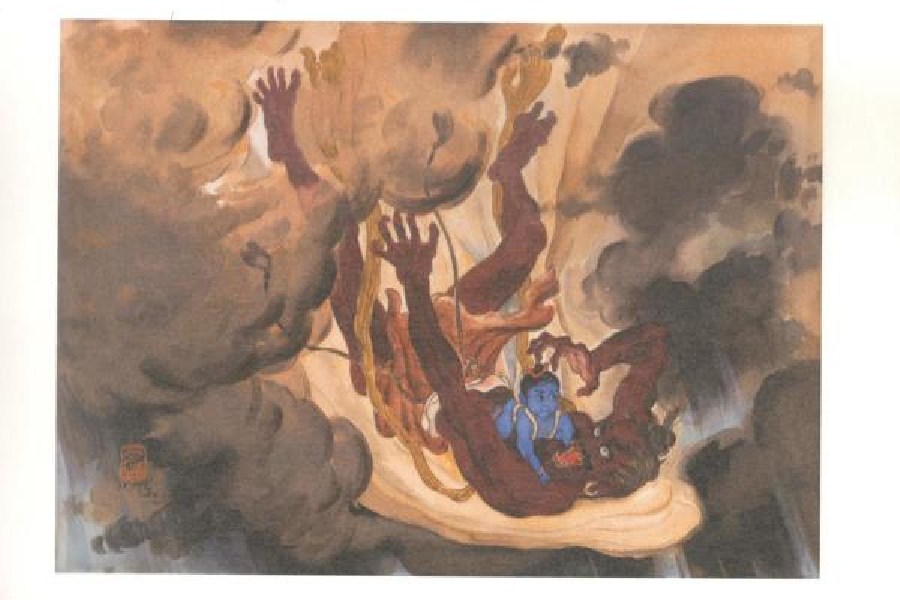Those who are lucky enough to have read the Signet Press editions of Abanindranath Tagore’s Nalak and Kshirer Putul will remember the beautiful illustrations in both books. Yet, how many remember that the artworks were the creations of Samarendra Nath Ghosh (1912-1995)? An exhibition of whatever little remains of Ghosh’s art — some in a precarious condition — was held at the Academy of Fine Arts (April 28-May 4), reviving his memories, albeit momentarily.
Ghosh was born in 1912 in Harichar village in the Comilla district of former East Bengal and he was trained at the Government School of Art & Draftsmanship in Calcutta when Mukul Dey was the principal. Ghosh won the governor’s gold medal twice. Dey recommended him for the post of a school art teacher. While working at the renowned ad agency, D.J. Keymer, Ghosh created some wonderful artwork for various clients, including Dunlop. Dushwanta wooing Shakuntala was charmingly realised for a Dunlop campaign. He was adept at drawing and painting in various media and at printmaking. His works were acquired by Europeans and titled heads of the land. He was close to Abanindranath Tagore, who sat for his portrait to be painted by Ghosh. The painting is missing but a photograph shows Abanindranath sitting for his portrait to be painted, possibly the only time he has done this. A pen and ink likeness of Abanindranath dated 1955 was, however, displayed at the exhibition.
Ghosh was a dab hand at drawing; he had mastered both academic realism and the softer style of the Bengal School. His paintings in gouache depicting the childhood of Krishna are marked by chromatic harmony. The various shades of chrome yellow and Indian red of the garments are contrasted with the blues and greys of the stormy night and of the swirling waters. Ghosh had more than a passing acquaintance with the art of Japan and China. That is evident from his dramatic depiction of the infant Krishna slaying a demon (picture).










